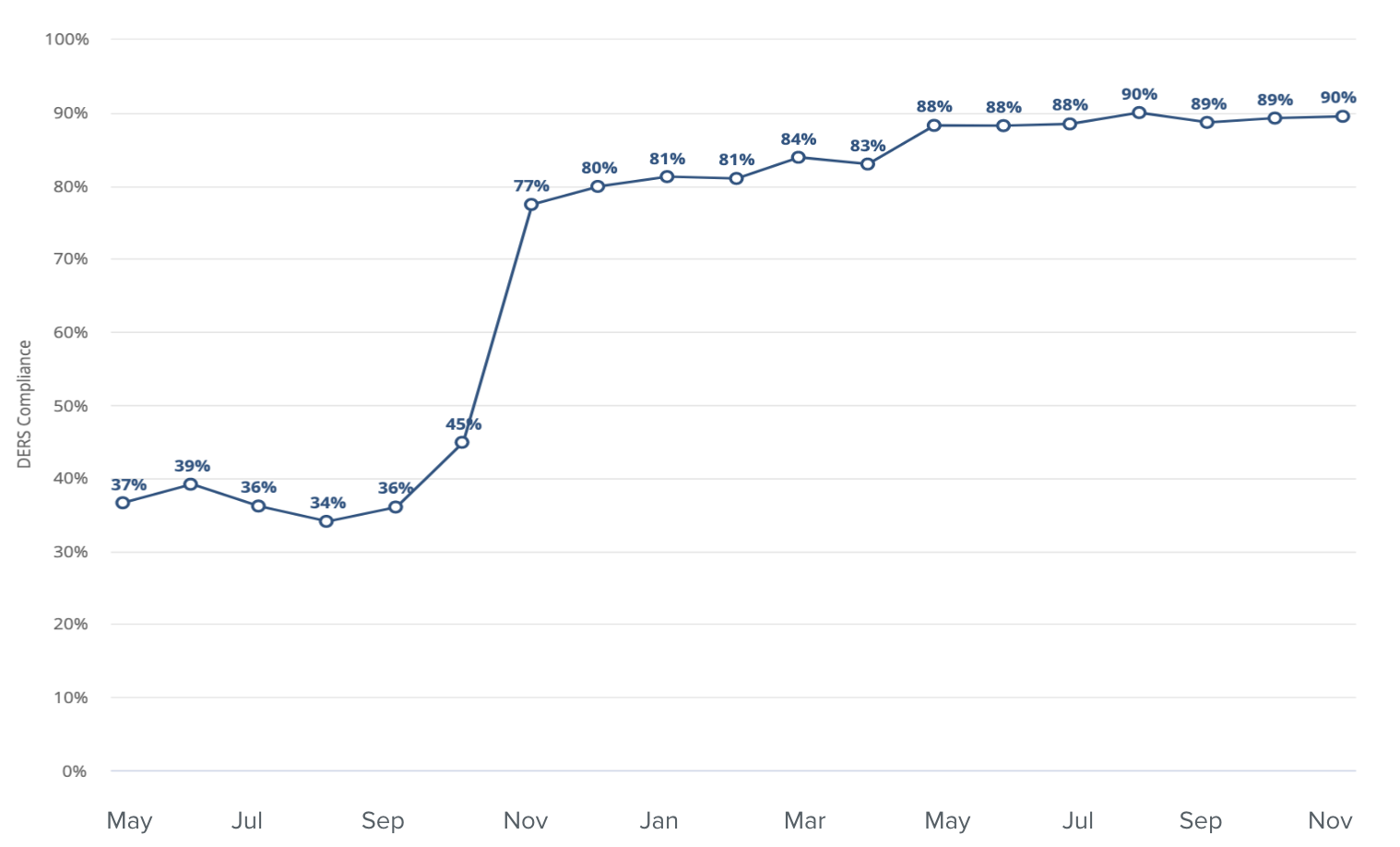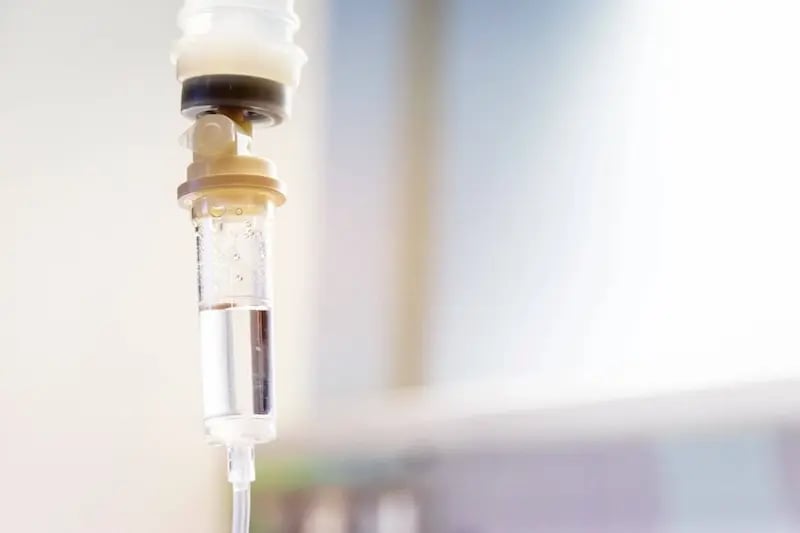
Med O.S.® for Infusion Safety Network Result
Building a Safer Infusion Culture: Increasing DERS Compliance From 34% to 90% Through Targeted Action
Study Overview
Situation
A hospital system on the East Coast was preparing to transition to a new infusion pump vendor and wanted to improve Dose Error Reduction Software (DERS) library compliance, given their historic monthly compliance was below 40%.
Business Case & Findings
The Institute for Safe Medication Practices (ISMP) advocates for a DERS compliance goal of 95%. Bainbridge Health’s national network data further demonstrates best-practice DERS compliance consistent with the 95% goal. A library analysis at this site revealed that drug library configurations were too rigid for real-world clinical use, resulting in a high number of infusion administrations outside of the DERS library protocols.
Results
By leveraging Bainbridge Health’s Med O.S.® solution, the health system increased its monthly DERS library compliance from 34% to over 90% through the implementation of numerous interventions, thereby reducing the risk for medication errors and improving the engagement of bedside staff.
Situation
A hospital system on the East Coast was preparing to transition to a new infusion pump vendor and was interested in identifying barriers to the use of the DERS library ahead of the technology transition. The organization faced a critical challenge: only 34% of infusions were being delivered using the DERS library safeguards.
This low compliance rate placed patients at risk for preventable medication errors and presented an added challenge with the upcoming infusion pump vendor transition. The hospital’s clinical and pharmacy leaders recognized that DERS compliance wasn’t just a metric—it was a foundation for patient safety. They set a goal to increase DERS compliance in alignment with ISMP best practices, which required a targeted, data-informed strategy to identify and close the wide gap from where their current DERS compliance had historically been.
Business Case
- Medication errors can lead to patient harm and over $8,000 of avoidable costs per event. Nursing interruptions are associated with a 16.1x greater risk of harm.1,2
- ISMP recommends achieving and maintaining ≥95% DERS compliance to effectively reduce the risk of patient harm by preventing infusion-related medication errors.3
- Pharmacy & Safety leadership further determined that engaging Bainbridge Health would reduce the time investment from the Pharmacy and Medication Safety teams to analyze data and identify potential gaps in the current DERS library built, resulting in barriers to bedside staff compliance.
Intervention & Impact
Bainbridge Health partnered with the hospital to uncover the root causes behind persistently low DERS compliance. Analysis revealed that drug library configurations were too rigid for real-world clinical use, leading to frequent overrides and bypassing of the safety features within the smart pump software. DERS compliance also varied widely across nursing units, with limited visibility for frontline leaders to identify and address the gaps in a systematic manner.
To address these issues, Bainbridge implemented a targeted set of interventions:
- Optimized Drug Library Parameters: Bainbridge Health collaborated with pharmacy and clinical teams to revise smart pump dosing limits and settings, aligning them with real-world infusion practices. This reduced unnecessary bedside interruptions and encouraged safer programming.
- Non-Compliant Infusion Analysis: By analyzing patterns of programming outside of the DERS library, Bainbridge Health identified why clinicians were bypassing these safeguards. These insights were used to inform training, adjust drug library parameters, and close workflow gaps.
- Unit-Level Compliance: Bainbridge Health developed patient-care unit-level dashboards and analysis workflows that gave frontline managers visibility into their teams’ DERS compliance. This enabled proactive coaching, targeted follow up, and a new layer of accountability across departments.
The health system increased average monthly DERS library compliance from 34% to 90%, reducing the risk for injectable medication events throughout the hospital. By shifting the vast majority of infusions back inside the smart pump DERS safety framework, the hospital ensured that patients received safer, more consistent care.

Figure: DERS compliance over time
Related Network Results

Optimizing Chemotherapy Decision Support to Reduce Bedside Interruptions by 85%

Optimizing Clinical Resource Allocation: Creating Efficiency Through Streamlining Infusion Data Analysis

Bainbridge Health Helps a Five-Hospital System Reduce Clinically Irrelevant Alerts by 70%
Ready to Harness the Full Potential of Your Infusion Data?
Disclaimer
This example is for informational purposes only and should not be relied upon to make specific clinician decisions.
All clinical opportunities identified by Bainbridge Health were evidence-based according to supporting literature and network data. They were also made under the surveillance of the Bainbridge Health Clinical Solutions team, an interdisciplinary group of subject matter experts who provide guidance and oversight.
References
- Institute of Medicine. Preventing medication errors. Washington, DC: The National Academies Press; 2007.
- Drews F, Markewitz B, Stoddard G, et al. Interruptions and the delivery of care in the intensive care unit. Human Factors. 2019; 61(4):564-576.
- Institute for Safe Medication Practices (ISMP). Survey results: Smart pump data analytics. Acute Care ISMP Medication Safety Alert. 2018; 23(14).